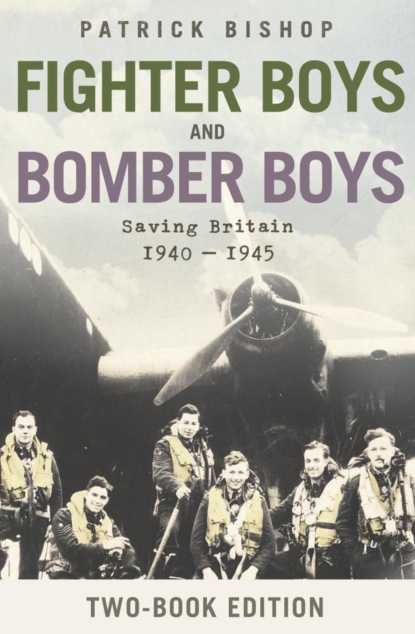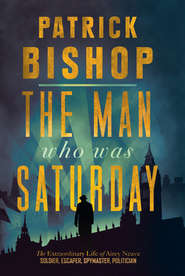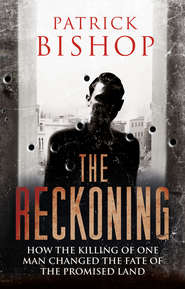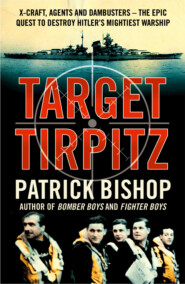По всем вопросам обращайтесь на: info@litportal.ru
(©) 2003-2024.
✖
Fighter Boys and Bomber Boys: Saving Britain 1940-1945
Настройки чтения
Размер шрифта
Высота строк
Поля
It was the second view that took hold, both in air force and political thinking, although never to the point where alternative reasoning was suppressed. The strategic debate of the inter-war years was dominated by two phrases. They were slogans rather than expressions of profound thought. One was the idea of the ‘knock-out blow’, which could bring victory in a single action. The other was the conviction that ‘the bomber will always get through’ – a phrase popularized by Baldwin in November 1932 in a Commons speech which sent a spasm of foreboding through the country. What that meant, he continued brutally, was that ‘the only defence is offence…you have to kill more women and children more quickly than the enemy if you want to save yourselves’.
(#litres_trial_promo)
The logic of this bleak conviction was that fighters would have only a secondary role to play. Despite the prevalence of these views, successive governments proved reluctant to invest in building up a bombing force that could both ‘get through’ and strike the ‘knock-out blow’. Money was one problem. But the understandable miserliness of politicians trying to manage a vulnerable economy in shaky times was informed by less easily identifiable and more complex motives. Many of the public figures of the 1920s and 1930s had served in the war and knew its horrors at first hand. They shared the ordinary citizen’s dread of a recurrence, and shrank away from consideration of the unpopular positions that a reasoned rearmament policy would have required.
The conduct of Britain’s defence in the years from 1918 to 1936 looks now to have been extraordinarily negligent and foolhardy. It seemed so to some at the time. But among the victor nations the impulse was to seek idealistic alternatives, exemplified by the great disarmament conference of 1932-4 and the foundation of the League of Nations. Until the threat from Germany was naked and unmistakable, the RAF would lack the sort of carefully planned, sensibly timed and realistically funded programme it needed to develop properly. Progress was jerky and reactive and frequently triggered by panic. The original plan to create fifty-two squadrons for home defence was provoked by alarm at the news that France had an air fleet of 300 bombers and 300 fighters. When that chimerical threat evaporated, so, too, did the will to pursue the scheme.
The arrival of Hitler in 1933, and Germany’s withdrawal from the League of Nations and the disarmament conference, produced another spurt of activity, resulting in what was known as expansion scheme A. It was officially announced in July 1934, the first of thirteen such schemes that appeared over the next four years, most of which never got beyond the proposal stage, as Britain tried to achieve some sort of rough parity with Germany. Scheme A was an interim measure designed to signal to Hitler that Britain was prepared to take to the starting blocks in an aerial arms race. It also created a structure to provide training, and the basis for a more ambitious expansion should the message be ignored. The planned level of home squadrons was increased from the original fifty-two to sixty-four. Scheme A also increased the proportion of fighter squadrons. There were to be twenty-five now, against thirty-nine bomber units compared to seventeen and thirty-five in the 1923 plan.
The shift was a political rather than an air force initiative. It was opposed by the Chief of the Air Staff, Sir Edward Ellington, who stuck to the view that a big bomber fleet was central to Britain’s security. The well-publicized fact that the increased range of German bombers meant they could now reach well into the industrial north-east of Britain and the Midlands undermined this approach.
The argument that there was no real defence against bombers was being invisibly eroded anyway. Out of sight and far away from the committee rooms where military planners and government ministers and officials met, scientists and engineers worked with RAF officers to develop technologies that would greatly increase the vulnerability of attacking air forces. In the search for scientific means of combating attacking aircraft, attention had been given to a ‘death ray’ which would neutralize the ignition systems of aircraft, causing them to drop from the sky. Research under the direction of R. A. Watson-Watt, superintendent of the Radio Department at the National Physics Laboratory, suggested the scheme was impractical. However, the experiments confirmed the fact that aircraft interfered with radio waves and radiated a signal back. This suggested the possibility of a detection system that could reveal their position, height and direction. The huge importance of the discovery was recognized immediately and from February 1935 there was strong official backing for the development of what became known as radar.
The RAF’s own thinking had been that if enemy aircraft were to fly at more than 200 m.p.h. at over 10,000 feet, and no warning was given of their approach before they reached the coast, it would be impossible to get aircraft airborne in time to prevent them from bombing London. Now radar could provide that warning, a development which, as one historian of the RAF observed, ‘indicated the obsolescence of the RAF’s whole existing theory of war’.
(#litres_trial_promo) None the less the belief that bombers provided the best security would persist until the end of 1937. The change was led by government figures who were persuaded that there was no longer any hope of equalling the numerical strength of the Luftwaffe before war broke out.
Radar complemented important breakthroughs that were being made in aircraft design. The development of military aviation in Britain had been haphazard. The Air Ministry had no designers of its own and relied on private firms to answer specifications for new types. Perennial money problems made it difficult to establish long-term relationships with private manufacturers, hindering the development of an efficient system of procurement, research and development such as existed in Germany.
There were delays of up to six years between the issue of a specification, acceptance of a design, manufacture and entry into service. The progress of the Hurricane and the Spitfire from drawing board to the skies was quicker, but far from smooth. By the end of the 1920s it was obvious the biplane era was over. The most powerful machine in the RAF’s hands, the Hawker Fury, could only manage 250 m.p.h. The 1929 Schneider Cup, a competition of speed and endurance between seaplanes, was won by the Southampton firm of Supermarine with an S6, a monoplane with a streamlined fuselage and metal wings, flying at an average of 328.63 m.p.h. In 1930 the Air Ministry issued specification F.7/30 for a new high-speed fighter, opening the competition to single wing designs. Monoplanes had been around from almost the beginning of aviation but were inferior in terms of manoeuvrability to biplanes, whose twin surfaces provided considerably more lift. Streamlining, metal airframes and new engines powerful enough to keep them airborne removed this restriction and delivered the future to the monoplane.
In August 1933 Sydney Camm, chief designer at Hawker Aircraft Limited, presented two designs to the Air Ministry for a biplane and a monoplane. Both were rejected as too orthodox – evidence of the presence of some radical and imaginative minds at important decision-making levels inside the air establishment. The board of Hawker decided to continue development anyway. When the Air Ministry issued a new specification the following year, Camm’s design was close to their requirements, and a prototype, K5083, was ordered. The RAF wanted a fighter capable of 300 m.p.h. which could fly as high as 33,000 feet. To meet these demands the aircraft needed to be streamlined with an enclosed cockpit and a retractable undercarriage. It also had to be capable of bearing a battery of machine guns. Ballistics experts calculated that at the new high speeds an intercepting fighter would have only two seconds to shoot down an incoming bomber. Eight machine guns, each firing 1,000 rounds a minute, were needed to provide the required weight of fire.
The novelty of the project and the high demands of the specification meant that fundamental problems of physics, engineering and design arose at every stage. The crucial question of power had been answered by the appearance of the Rolls-Royce PV twelve-piston engine, later known as the Merlin. It developed 1,030 horsepower, more than twice that of the best engine of the First World War. The thrust it delivered made speeds of 330 to 340 m.p.h. possible – more than enough to satisfy the RAF’s demands.
Camm’s original design had been called the Fury monoplane, a name that conceded the fact that even after 4,000 blueprints the aircraft was only half-way evolved from its biplane origins. The frame was of metal tubes and wooden formers and stringers. The skin was fabric, heavily painted with dope to reduce drag, and stressed-metal wings were only added fairly late in the development. The outlines of the old Fury were certainly discernible in its profile. But it was definitely something else. They called it a Hurricane. It was not a new name, having belonged to a short-lived aircraft of the 1920s. But it conveyed a note of confidence and aggression that was infinitely more reassuring than the placid Harts, Flycatchers and Grebes of the previous generation.
The Hurricane made its first flight on 6 November 1935 at Brooklands in Surrey. Hawker’s chief test pilot, George Bulman, a small, bald, ginger-moustached extrovert who had flown with the RFC in the war, was in the cockpit. The prototype had been developed in great secrecy. When the tarpaulins were stripped away and the hangar doors opened, there were murmurs of surprise. It was painted silver, which emphasized the sleekness of its low, humped lines and the sculptured way the rounded wings fitted beautifully flush to the fuselage below the neat, narrow cockpit. It was big, bigger than any existing fighter, and at more than 6,000 pounds very heavy. It seemed unlikely that a single engine could get it off the ground. Bulman, in overalls and flying helmet, approached the machine and vaulted into the cockpit watched by Camm and other Hawker executives, who stood at the edge of the damp field, smoking nervously. The Hurricane bumped away into the distance then turned into the wind. The rumble of the Rolls-Royce engine deepened into a roar. The machine moved forward, gathering speed, but slowly, so that some thought Bulman would not get airborne before he ran out of field. At the last moment the Hurricane left earth in an abrupt bounding movement and climbed steeply. The spectators watched the undercarriage retract and the muscular shape dwindle into the distance until it disappeared and the sound of the engine faded. Half an hour later the reassuring drone was heard again. Bulman performed a perfect three-point landing and taxied over to where Camm was waiting to report the flight had been ‘a piece of cake’.
(#litres_trial_promo)
The Spitfire, the first prototype of which flew in March 1936, was a more modern design, all metal with a monocoque fuselage and thin, elliptical wings, the more sophisticated offspring of the Supermarine C6. It had the same Merlin engine as the Hurricane and carried the same guns, but at 5,180 pounds it weighed 1,000 pounds less and went 30 m.p.h. faster. The name was proposed by the chairman of Vickers, Sir Robert McLean, whose company had taken over Supermarine. R. G. Mitchell, whose designs carried the machine through its various evolutions to become the most beautiful and efficient fighter of its era, was not impressed. ‘Just the sort of bloody silly name they would choose,’ he is reported to have said on hearing the decision.
(#litres_trial_promo) But in the propaganda film of his life The First of the Few, which appeared in 1942, he is portrayed as devising the name himself: ‘A curious sort of bird…a bird that spits out death and destruction…a Spitfire bird.’
The orders came quickly, with the Air Ministry ordering 600 Hurricanes and 310 Spitfires in the summer of 1936. The accelerated pace reflected alarm that the next war might come sooner than expected. Preparations at every level speeded up as successive intelligence reports, and the Germans’ own boasts, suggested that Britain’s reluctant rearmament programme was insufficient either to deter or defend.
The sense of urgency, and the rapid twists and turns of circumstance, were evident in the brevity of the shelf-lives of the schemes that succeeded Scheme A, as both government and the Air Ministry tinkered with the plan to take account of a situation that always seemed to be changing for the worst. Only one scheme, Scheme F, approved by the cabinet in February 1936, was implemented as planned, coming to fruition in March 1939.
But the expansion was real. From 1935 forty-five new air stations were ordered to be built, most of which were finished by the time war came. Scheme C, which was approved in May 1935, envisaged 123 home squadrons as opposed to the 76 designated in Scheme A. That meant recruiting 1,500 pilots in the next two years. Altogether the RAF was to increase fivefold between 1934, when there were 31,000 officers and men, and the outbreak of war, when the service had an actual strength of 118,000 backed by about 45,000 reserves.
The Air Minister, Lord Swinton, inherited Trenchard’s system of short-service officers, who since the early 1920s had supplemented and outnumbered the cadre of permanent RAF officers. He intensified links with public schools, attracting 1,700 entrants. A further 800 pilots were found among RAF non-commissioned officers. Australia, Canada, New Zealand and South Africa were all asked to contribute men. The number of auxiliary squadrons increased from eight to twenty in the run-up to the war. But more radical measures were needed to satisfy the new demand and, equally important, to provide a reserve.
A pool of pilots would be essential to replace the dead and wounded once the fighting started. The Director of Training at the Air Ministry, Air Commodore A. W. Tedder, a Trenchard protégé who had inherited some of his briskness of thinking, conceived the idea of a ‘Citizen Air Force’. It was to be democratic in character, and linked to a locality, but to the factories, offices and avenues and crescents of semi-detached homes in the new estates springing up around towns rather than to the shires to which the army’s territorial units attached themselves. The Air Ministry added that the new force should be ‘open…to the whole middle class in the widest sense of that term, namely the complete range of the output of the public and secondary schools’. Given its nature it was felt ‘inappropriate to grade the members on entry in as officers or airmen according to their social class’. Everyone therefore started out the same, as airmen under training, with commissions being awarded later on ability and leadership qualities.
(#litres_trial_promo) The Royal Air Force Volunteer Reserve, as it was christened, started in August 1936. It gave young men of between eighteen and twenty-five the chance to learn to fly, at no cost, in their spare time. They received £25 per annum and were expected to attend an annual fifteen-day flying course at one of the training centres set up around the country. The aim had been to take on 800 a year over three years, but the potential number of recruits was much greater and by the spring of 1939 there were 2,500 RAFVR pilots in training. When war broke out, 310 had already entered Fighter Command.
The second half of the 1930s saw the RAF transformed from a small, professional élite into a mass force with the potential to fight a major war. The question of how it would go about doing that was not finally resolved until the end of 1938, when the great strategic conundrum of bombers or fighters, offence or defence, was settled, at least for the first stage of the coming war. In December that year the balance shifted decisively in favour of fighters and ‘close defence’. The change was initiated not by the air force itself but by the government. Despite radar and the advent of the Hurricane and Spitfire, the Air Ministry pressed for parity with the German bomber force. But the government decided this was no longer possible within the time available. The goal had always been unrealistic. Britain was a democracy, reacting wearily to the threat of a war it had no wish to fight. Rearmament had been late and grudgingly paid for, with the aircraft factories still operating at peacetime levels of production. Germany was a dictatorship, heading at full speed and with no concern for cost towards a conflict of its own making. Britain was not going to catch up before the war was launched. It was the minister in charge of defence coordination, Sir Thomas Inskip, who forced the air force to accept the change in strategic thinking. In a memo to Swinton of 7 December he stated the new thinking crisply:
I cannot take the view that our Air Force must necessarily correspond in numbers and types of aircraft with the German Air Force. I cannot, therefore, persuade myself that the dictum of the Chief of the Air Staff that we must give the enemy as much as he gives us is a sound principle. I do not think it is the proper measure of our strength. The German Air Force…must be designed to deliver a knock-out blow within a few weeks of the outbreak of war. The role of our Air Force is not an early knock-out blow – no one has suggested that we can accomplish that – but to prevent the Germans from knocking us out.
(#litres_trial_promo)
The inference was clear. For the time being at least the emphasis would be on defence and making any German attack on Britain too painful to sustain. Despite the strenuous opposition of the Air Ministry and RAF senior staff, the Cabinet backed Inskip’s view. The next years would belong to the fighters, and those who flew them.
3 ‘Free of Boundaries, Free of Gravity, Free of Ties’ (#ulink_b545f370-08d8-53cb-ab73-96ce03dd3777)
The great RAF expansion gave thousands of young men the chance to realize an ambition that had seemed remote and probably unattainable when they first conceived it. That flying was possible was still a relatively novel idea. For most people in the world the thought that they would ever actually do so themselves was fantastical. The banality of aviation has hardened our imaginations to the fascination it excited in the years between the wars. Once, in Uganda in the 1980s, I was at a remote airstrip when a relief plane took some adolescent boys for a joyride. It was the first time they had been in an aeroplane. When they landed their friends ran out to examine them, as if they expected them to have been physically transformed by the experience.
So it was, or nearly so, in the inter-war years. ‘Ever been up?’ people would ask each other at the air displays that attracted hundreds of thousands in Britain in the 1920s and 1930s. Those who could say ‘yes’ were admired for their daring, their worldliness, their modernity. The men and women who flew the beautiful treacherous machines were exalted and exotic. In the eyes of many, their courage and skill put them at the apex of human evolution.
Aviators were as popular as film stars. Record-breaking feats of speed, distance and endurance filled the papers. Men were the most avid readers of these stories, young men and boys. Almost every pilot who fought in Fighter Command in 1940 fell for flying early. Their interest flared with the intensity of a great romance. For some, the first magical taste came with a ten-minute flip in the rear cockpit of one of the rickety machines of the flying circuses that hopped around the country, setting up on racecourses or dropping in at resort towns. The most famous was led by Alan Cobham, a breezy entrepreneur who was knighted for pioneering flights across Asia. Billy Drake was sixteen years old, on holiday from his boarding school in Switzerland, when the circus arrived to put on a display close by his father’s golf club near Stroud. It was half a crown to go up. Drake was already intoxicated with aviation, but his parents tried to dissuade him, partly because flying seemed a dead end for a middle-class boy, but also because they feared for his safety. The brief hop over the Gloucestershire fields was enough to set the course of his early life. ‘When I got down,’ he remembered many years later, ‘I knew that this was it.’
(#litres_trial_promo)
Pete Brothers watched aeroplanes in the skies around his home in Lancashire, where his family owned a firm supplying chemicals to the food and pharmaceutical industries. In his spare time he made model aeroplanes. His family were wary of his enthusiasm. In 1936, on his sixteenth birthday, he was given flying lessons at the Lancashire Aero Club in the hope that the draughty, dangerous reality of flying would cool his ardour. ‘My father said, “You’ll get bored with it, settle down and come into the family business.” But I didn’t. I went off and joined the air force.’ He took his father flying and he, too, became ‘flat-out keen’.
(#litres_trial_promo)
Sometimes, unwittingly, parents planted the germ themselves. Dennis David was seven years old and on holiday in Margate when, ‘as a special treat, my mother and I went up in an Avro 504 of the Cornwall Aviation Company. Though I was surprised by the din, this…sowed a seed inside me.’
(#litres_trial_promo)
Just the sight of an aeroplane could be enough to ignite the passion. James Sanders got up at five one morning, in July 1933, at the villa in Genoa where his wealthy archaeologist father had moved the family, to watch a formation of twenty-four Savoia Marchetti seaplanes, led by Italo Balbo, the head of the Italian air force, heading west on a propaganda visit to the United States, and felt two certainties. ‘There was going to be a war, there was no question about it, and I was going to be in the air force.’
(#litres_trial_promo)
Throughout the inter-war years, all around the country, many a flat, boring pasture was transformed into an airfield and became an enchanted domain for the surrounding schoolboys. On summer evenings Roland Beamont would cycle from his prep school in Chichester to the RAF station at Tangmere, climb on to his bicycle to see over the hedge and watch 11 Squadron and 43 Squadron taking off and landing in their Hawker Furies. From the age of seven, when he had been taken up by a barnstorming pilot, he had been entranced with flying. Watching the silver-painted biplanes, the sleekest and fastest in the air force, he decided he ‘wanted more than anything else to be on fighters’.
(#litres_trial_promo) Twelve years later he was in the middle of the Battle of Britain, flying Hurricanes from the same aerodrome.
First encounters with aeroplanes and airmen sometimes had the quality of a dream. Bob Doe, a shy schoolboy, was walking home after classes to his parents’ cottage in rural Surrey when ‘an RAF biplane fighter…force-landed in a field close to the road. I was able to walk around it, touch it and feel what was to me [the] beginning of the mystery of aviation.’
(#litres_trial_promo) Thousands of miles away on the other side of the world, near the town of Westport in the Southern Alps of New Zealand, a small, restless boy called Alan Deere had experienced the same revelation. While playing near his father’s farm he heard the note of an engine in the sky, looked up and saw a tiny silver machine. He had heard of aeroplanes but never seen one. ‘The fact that one was now overhead seemed unbelievable. Where did it come from? Who was the pilot? Where was it going to land?’ After the aircraft put down on a beach, he and his friends stood ‘for long hours…and gazed in silent wonder at the aeroplane until eventually our persistence was rewarded by an invitation to look into the cockpit. There within easy reach was the “joystick”…the very sound of the word conjuring up dreams of looping and rolling in the blue heavens.’ As he studied the instruments ‘there gradually grew within me a resolve that one day I would fly a machine like this and perhaps land on this very beach to the envy and delight of my boyhood friends.’
(#litres_trial_promo)
Almost all of these recorded episodes feel like encounters with fate. Brian Kingcome was making his languid progress through another term at yet another boarding school when, one sunny afternoon, ‘there came the drone of an aero-engine overhead – not a common sound in the mid 1930s – and a small aircraft circled the school a couple of times at roof-top height. The whole school rushed out to watch spellbound as the tiny machine throttled back and, in that lovely, burbling, swooshing silence that follows the throttling back of an old fashioned aero-engine, glided in to land in the park in front of the house.’ The pilot who emerged, nonchalant and romantic in flying helmet and silk scarf, was a young man, four years Kingcome’s senior, whom he had known at one of the several previous schools his mother’s whims had directed him to.
‘Is there a Brian Kingcome here?’ he asked. ‘Have I come to the right place?’
He had, and there was. My stock soared…Basking in the gaze of many envious eyes, I climbed aboard and a moment later found myself for the first time in a world I had never dreamed could exist – a world free from the drag of earth’s umbilical cord, free to climb, swoop and dive, free of boundaries, free of gravity, free of ties, free to do anything except stand still.
(#litres_trial_promo)
Whatever their differences of background, all these boys were children of their time. Their enthusiasms were stoked by what they read in the illustrated papers, aimed at the youth market, that sold in millions. These, just as others would do a generation later, leant heavily on the preceding war for their material, and particularly on the doings of the heroes who had emerged from the RFC. The anonymous editors of the comics of the era, with their almost infallible comprehension of the young male psyche, recognized at once the charge that old-fashioned swashbuckling married to modern technology would carry. The example of the first fighter aces fixed itself in the imaginations of a generation being born just as they had met their deaths. Even at nineteen the thoughts of Geoffrey Page as he left his public school to go up to study engineering at London University ‘were boyishly clear and simple. All I wanted was to be a fighter pilot like my hero, Captain Albert Ball. I knew practically all there was to know about Albert Ball; how he flew, how he fought, how he won his Victoria Cross, how he died. I also thought I knew about war in the air. I imagined it to be Arthurian – about chivalry…death and injury had no part in it.’
(#litres_trial_promo)











